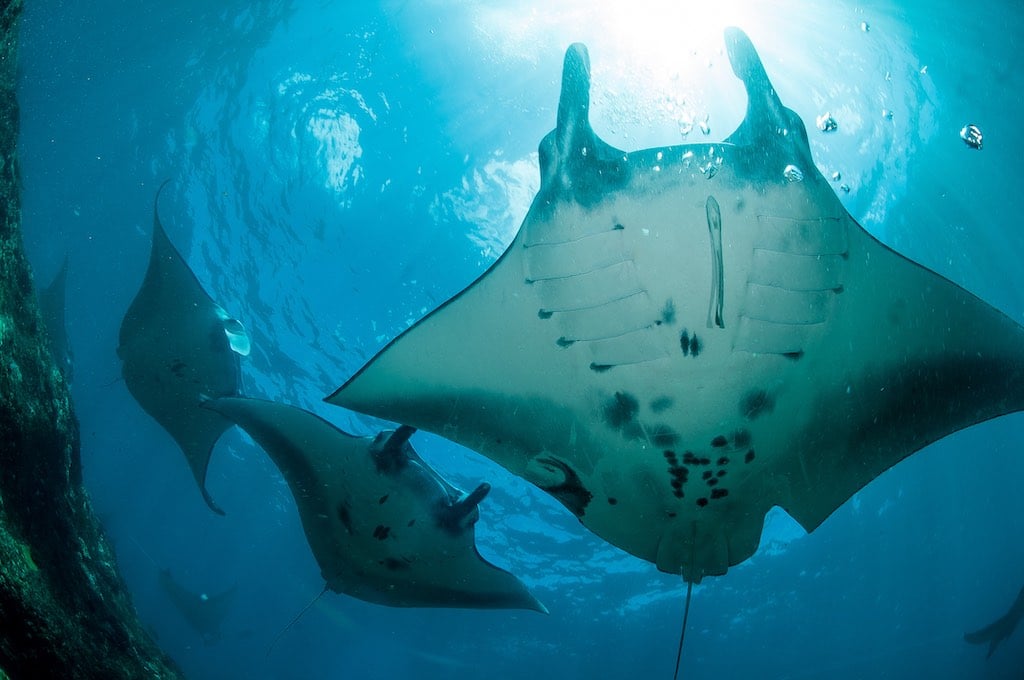Divers from all over the world come to dive in Nusa Penida, Bali, to encounter two famous pelagic fish: the manta ray and the mola mola. Manta rays can be seen there almost all year round, while mola mola are regularly spotted from July to October. This article is dedicated to manta rays: their different species, the cleaning stations. And also the best places to see them in Bali and Nusa Penida. Another article covers the Mola Mola.
If you’re solely interested in learning where to swim with manta rays in Bali, feel free to switch to the Manta Point page now. This location, situated near their cleaning station in Nusa Penida, offers the highest chance of encountering these majestic creatures. However, I’m confident that after diving with Manta Rays, you’ll be eager to learn more and return to this page!
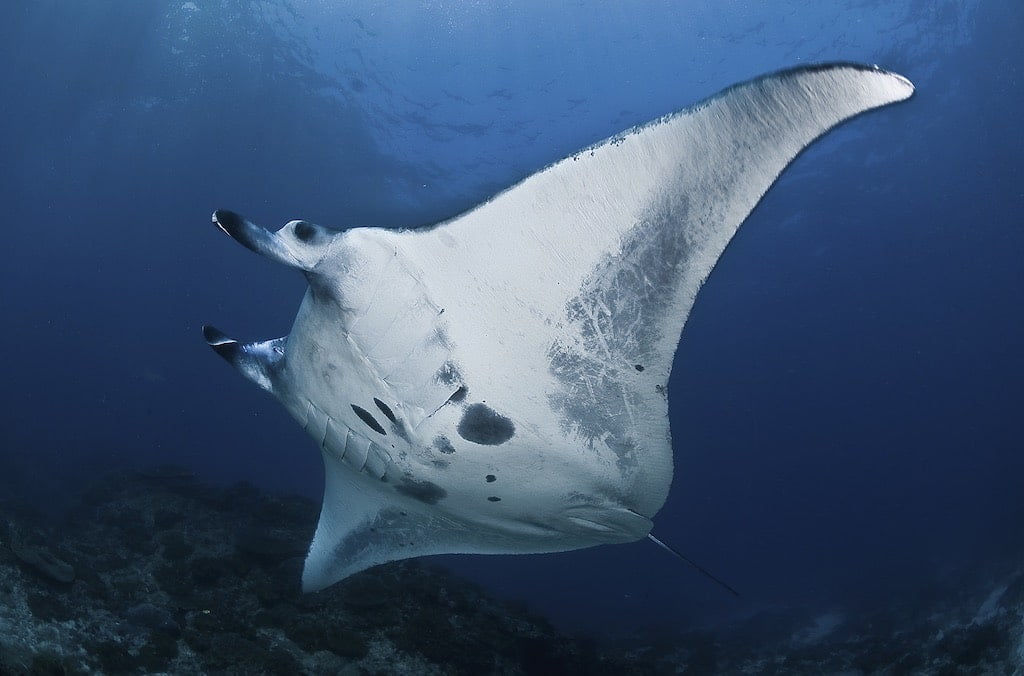
Oceanic or reef manta ?
There are two distinct types of mantas: the oceanic manta ray or giant manta ray (birostris) and the reef manta ray (alfredi). The variety of manta ray that is typically spotted in Bali, particularly in Nusa Penida, is the reef manta ray. These magnificent creatures boast a wingspan that can span up to 5 meters, pectoral fins, horn-shaped cephalic fins, a large mouth that faces forward, and five pairs of gill slits on their ventral surface.
Typically, manta rays have dark backs with striking white underbellies, each marked with a unique pattern of black spots—like a fingerprint that allows researchers to identify individuals. In Nusa Penida, you may even encounter rare all-black mantas, known as melanistic mantas,.
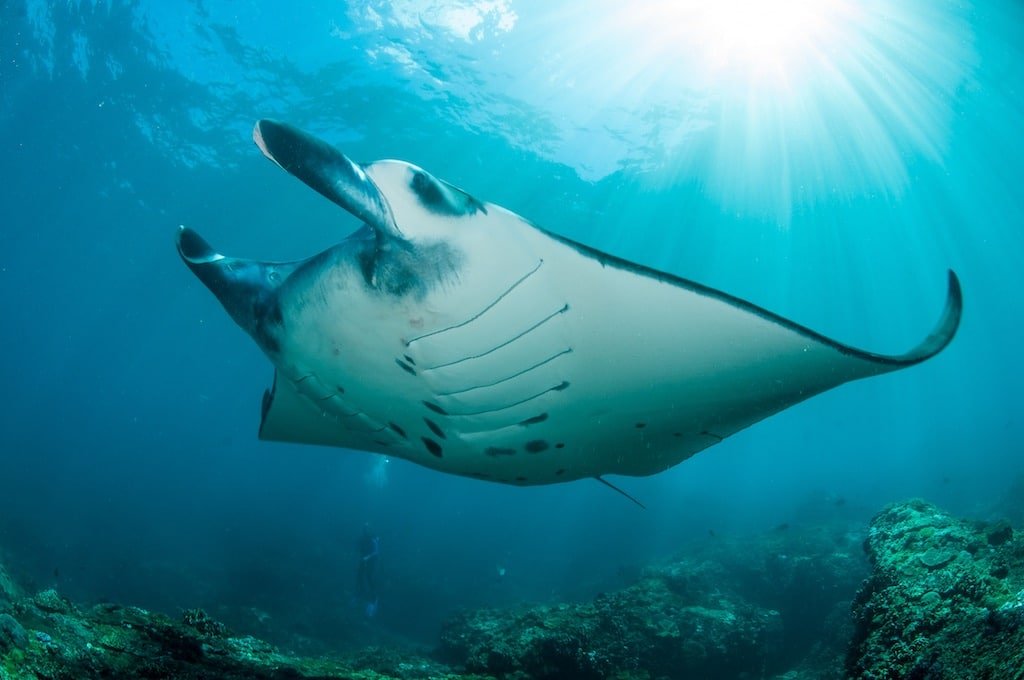
The island is also home to mobula rays, smaller relatives of mantas that are sometimes mistaken for juveniles. A quick way to tell them apart is by looking at their mouths—mobulas have theirs on the underside of the body—and their noticeably shorter tails.
Atlantic Manta Ray
In 2025, scientists confirmed a third manta species, the Atlantic manta ray (Mobula yarae). Found in the western Atlantic and Caribbean, it looks like a mix between the reef and oceanic mantas, with unique shoulder markings and lighter facial tones. Its discovery highlights how much we still have to learn about these gentle giants and the importance of protecting all manta populations worldwide.
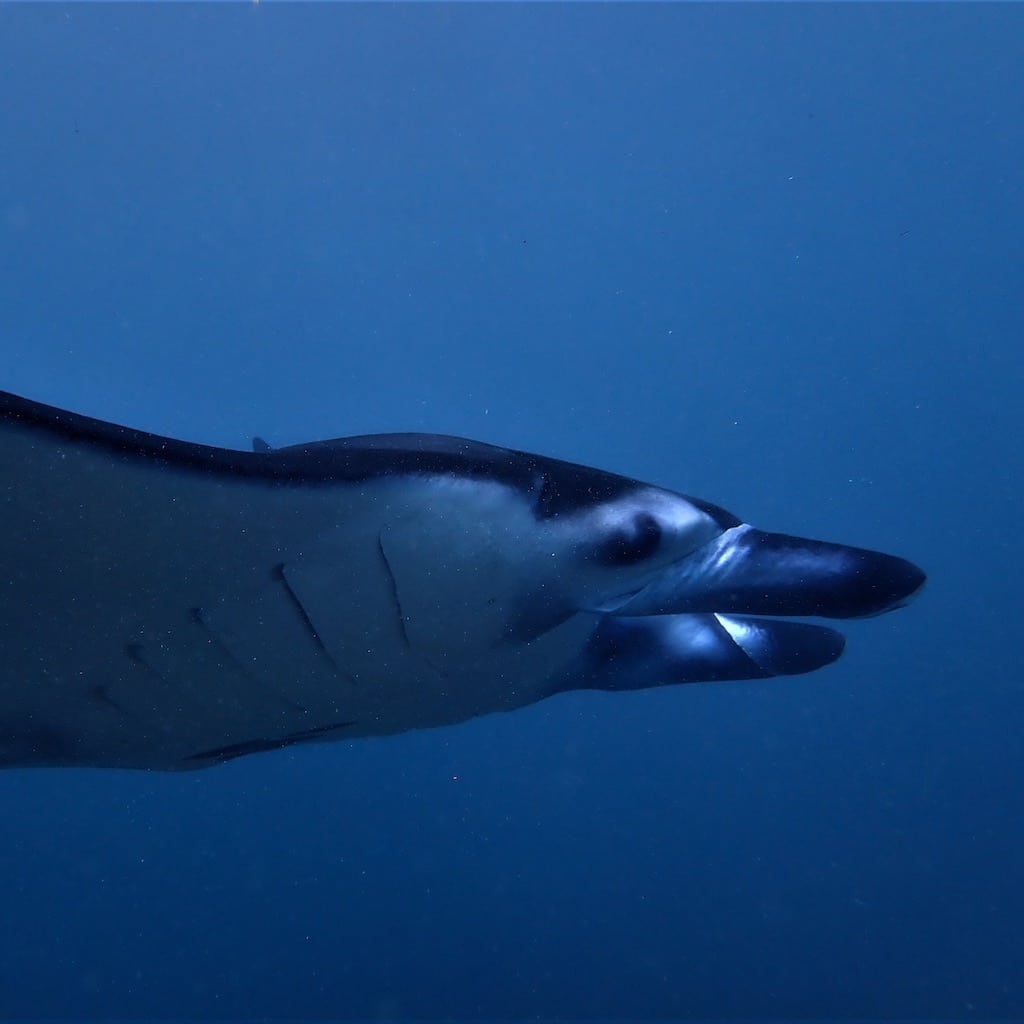
Where do manta rays live?
Manta rays thrive in warm temperate, subtropical, and tropical waters around the world. The oceanic manta ray is a great traveler. It migrates across vast stretches of the open ocean. In contrast, the reef manta ray usually stays closer to coastal areas. In some places, like Nusa Penida, they can be seen year-round. They return daily to cleaning stations such as Manta Point to remove parasites. Although reef mantas remain near shore, they can dive very deep. They can indeed reach depths of up to 400 meters when venturing farther out.
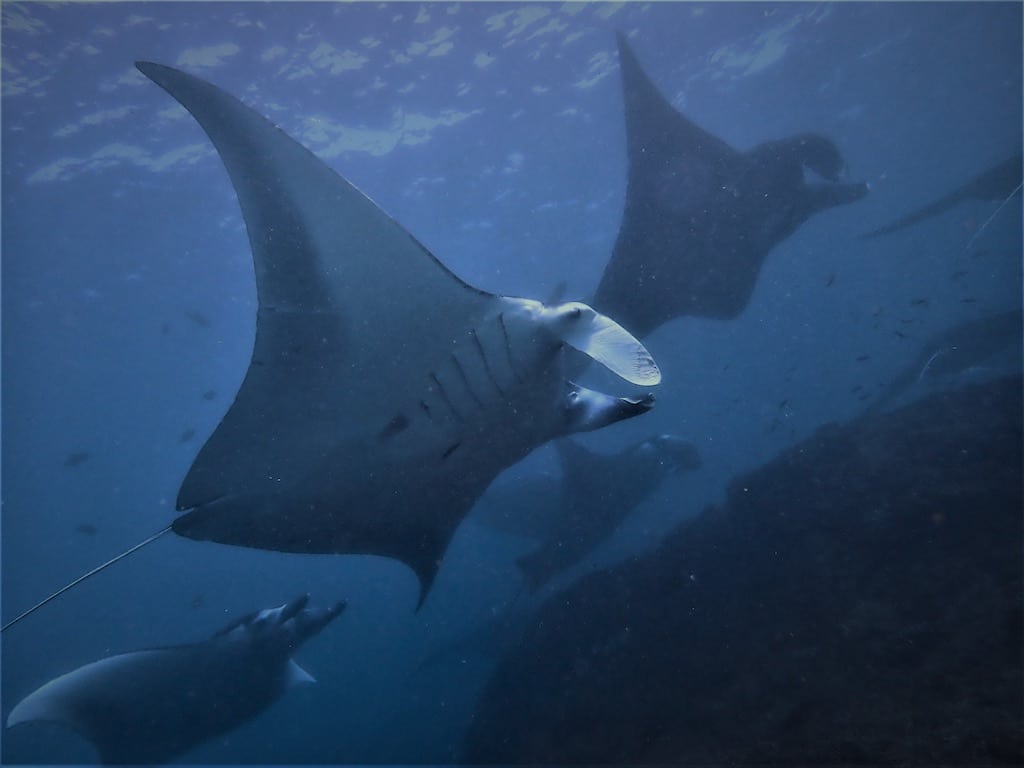
What is a manta ray cleaning station ?
A manta ray cleaning station is a special spot on the reef where manta rays gather to be cleaned by small fish that remove parasites from their skin, mouths, and gills. These stations are usually located around the tops of coral heads. The mantas glide in slow circles while the cleaner fish go to work, creating a fascinating display of symbiosis in action. At times, you may see just a single ray visiting. But they often arrive in groups—sometimes with dozens of individuals gathering at once.
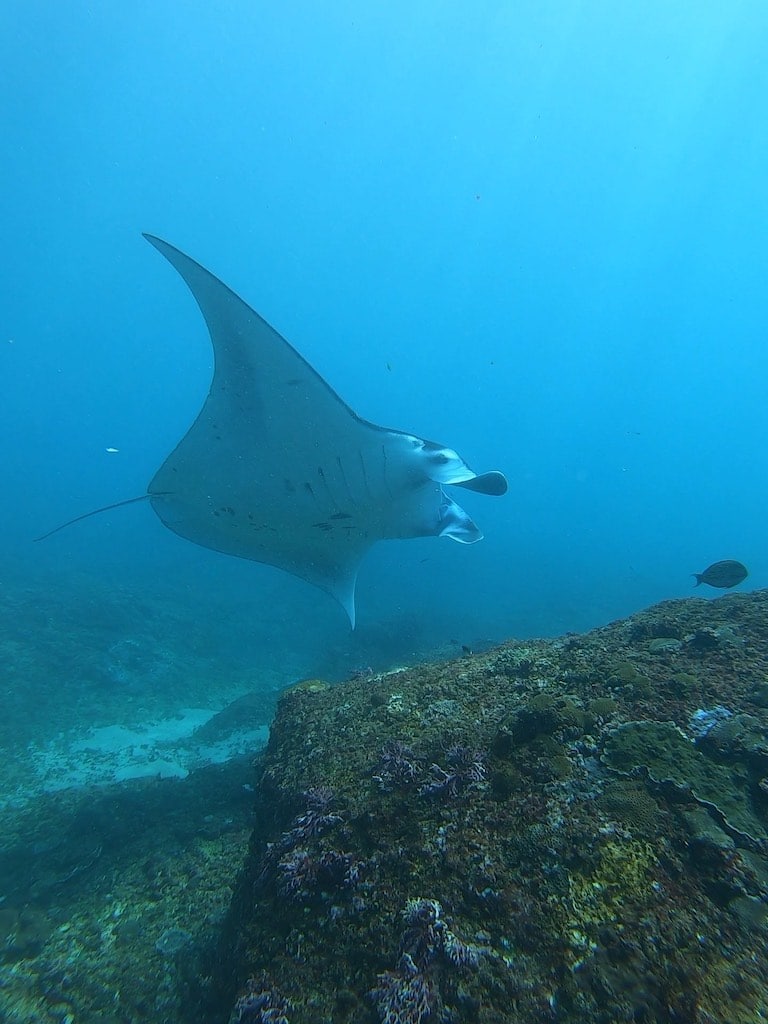
Can Manta Ray fly ?
Not exactly—but they sometimes appear to! On rare occasions, mantas launch themselves out of the water, either partially or completely, in a spectacular display known as breaching. Why they do this is still debated. Some scientists believe it helps them shake off parasites. While others think it may play a role in mating rituals or even serve as a form of communication. Whatever the reason, witnessing a manta ray soar out of the ocean is every bit as breathtaking as it sounds.
👉 Check out the videos of manta rays breaching and learn more about what experts think is behind this behavior here!
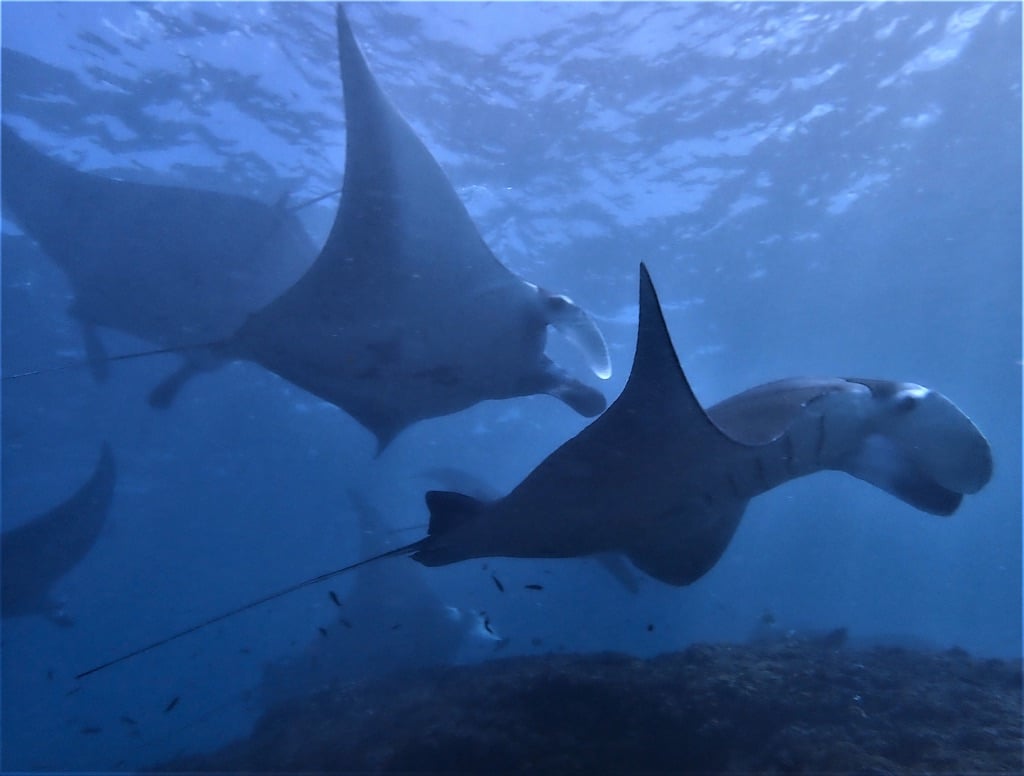
What does manta ray eat ?
Manta rays are filter feeders that primarily consume plankton, including shrimp, krill, and planktonic crabs. They use their sense of sight and smell to locate food. Then, they swim slowly with their mouths open while unfurling their cephalic fins to funnel plankton into their mouths. Water passes through their gill rakers, which trap the plankton before the filtered water is expelled. When not feeding, manta rays roll up their cephalic fins into a spiral shape, reducing drag and improving hydrodynamic efficiency. On average, they can consume around 5–10% of their body weight in plankton daily, depending on food availability.
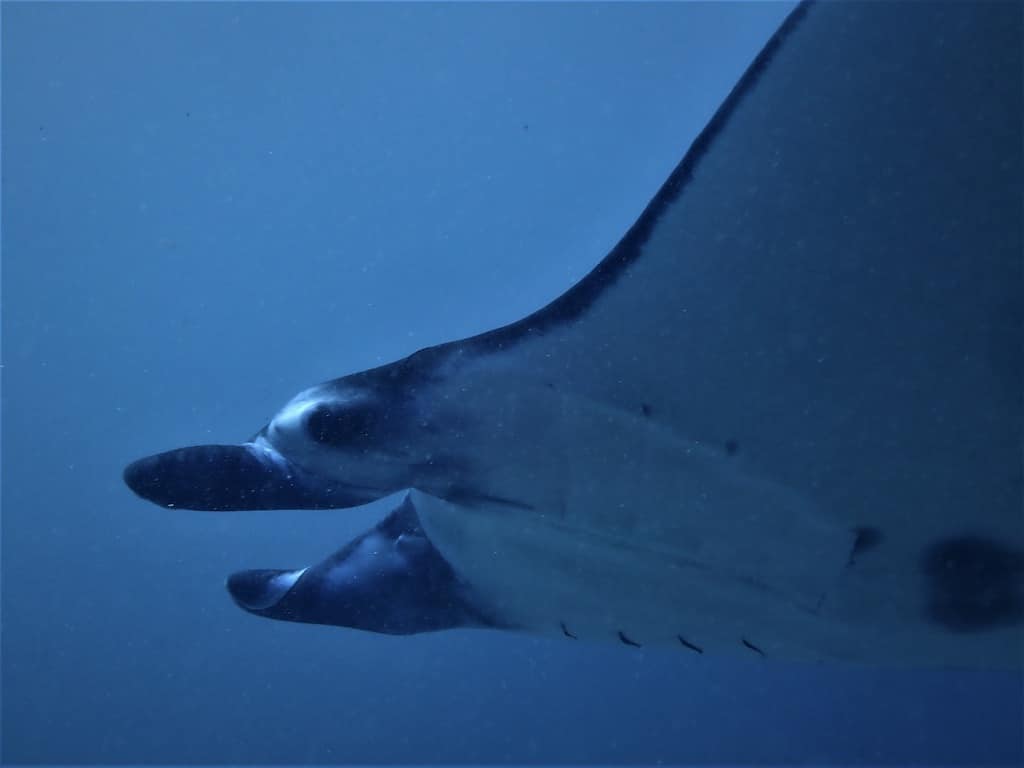
What about baby manta rays?
Manta rays are ovoviviparous, meaning the eggs develop and hatch inside the mother’s body before the pups are born. The gestation period lasts more than a year, and when born, the babies already measure between 1.3 and 1.5 meters across. Incredibly, they double in size within their first year of life. Mantas reproduce slowly, with females giving birth only once every five years on average. And they can live for up to 50 years. During the breeding season, they often leave coastal cleaning stations and head into the open ocean. So even places like Manta Point in Nusa Penida may sometimes feel unusually quiet.
💡 Did you know? Baby manta rays are born rolled up like little burritos, and within moments they unfurl their wings and begin to swim gracefully on their own!
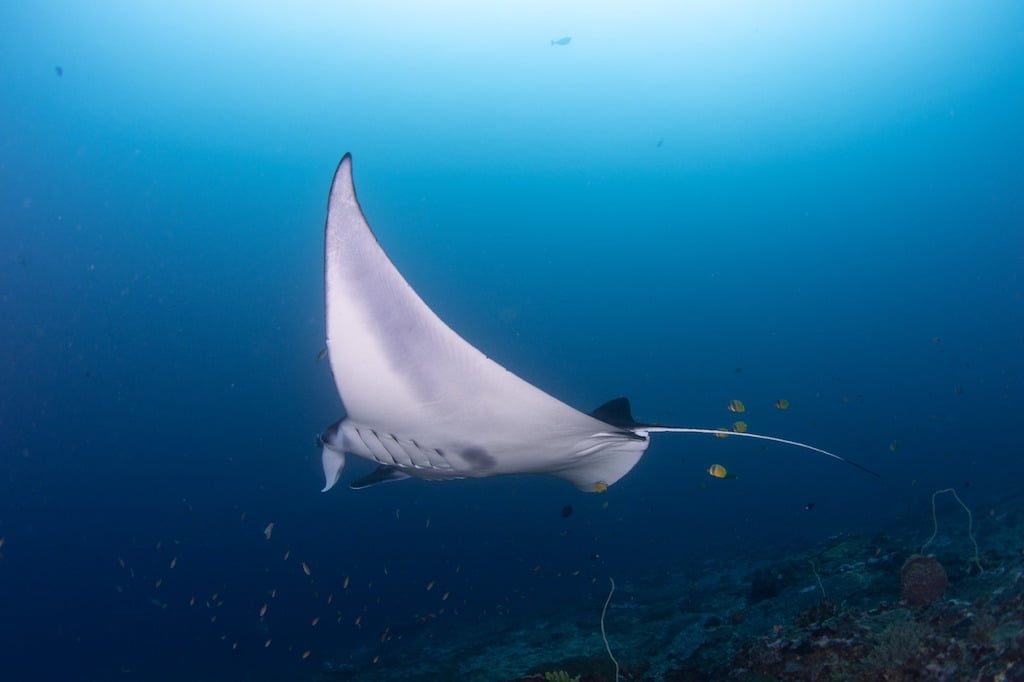
Are manta rays dangerous?
No, manta rays are not dangerous. While they may swim close out of curiosity, they generally avoid physical contact. As with any marine animal, it’s important not to touch them or attempt to do so—both for your safety and theirs.
Are manta rays endangered?
Reef manta rays have few natural predators, apart from large sharks, thanks to their impressive size and ability to reach speeds of up to 24 km/h. However, they are classified as vulnerable by the Convention on Migratory Species. Overfishing, pollution, and climate change pose the greatest threats to their survival. In 2014, Indonesia took a historic step by banning manta ray fishing and trade, creating the world’s largest manta sanctuary—an area covering 5.7 million km² of ocean.
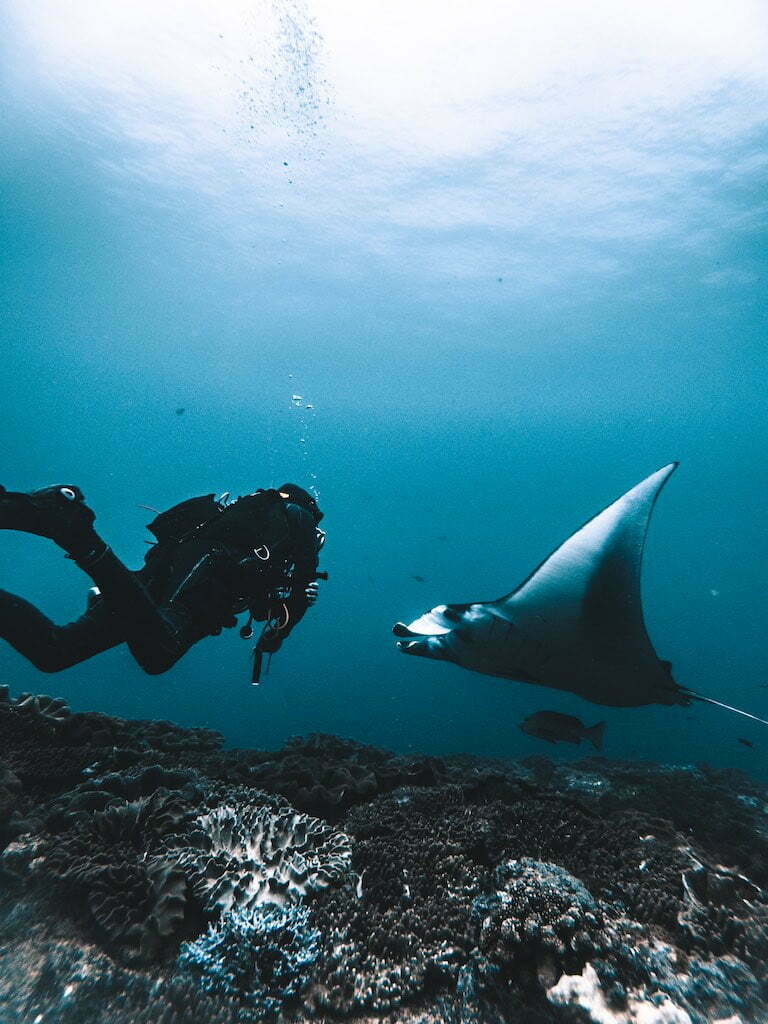
Where can you see manta rays in Bali?
The best place to dive with manta rays in Bali is around Nusa Penida, where two main cleaning stations—collectively known as Manta Point—are located on the island’s southwest coast, about a 45-minute boat ride from Toyapakeh port. While Manta Point offers the highest chance of encounters, mantas can also occasionally be spotted at other dive sites around Nusa Penida.
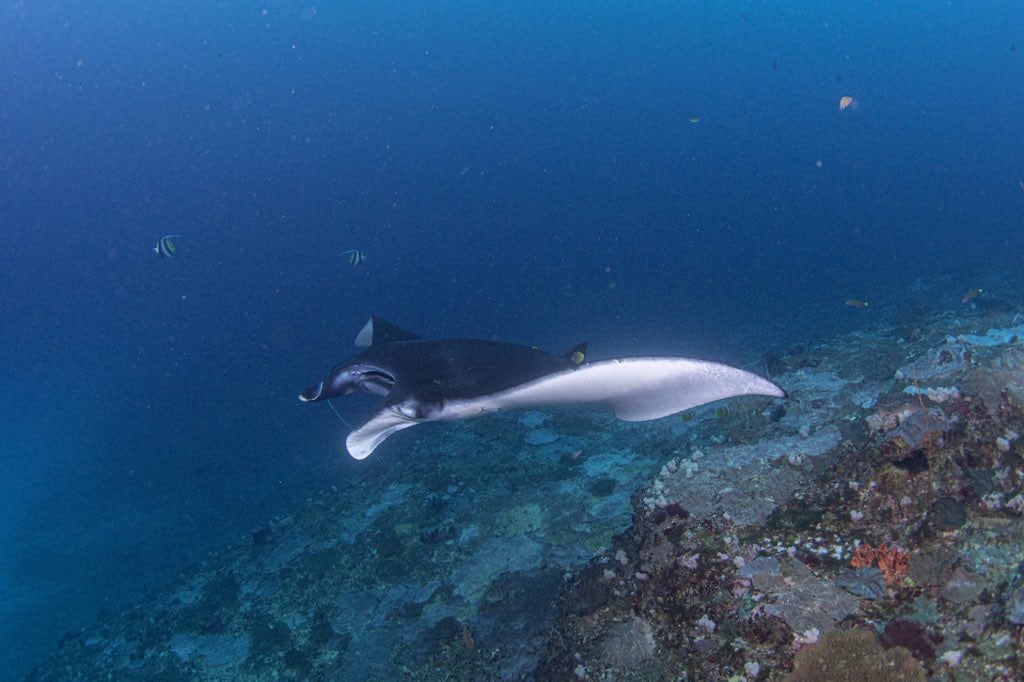
Manta Point is one of the best places in the world to see manta rays. Outside of the breeding season, divers enjoy an impressive 95% success rate of encounters with these majestic creatures. On calm days, you may even spot them from the top of the cliffs along Nusa Penida’s southwest coast. However, there is no beach access from these cliffs. So the only way to swim with mantas here is by boat.
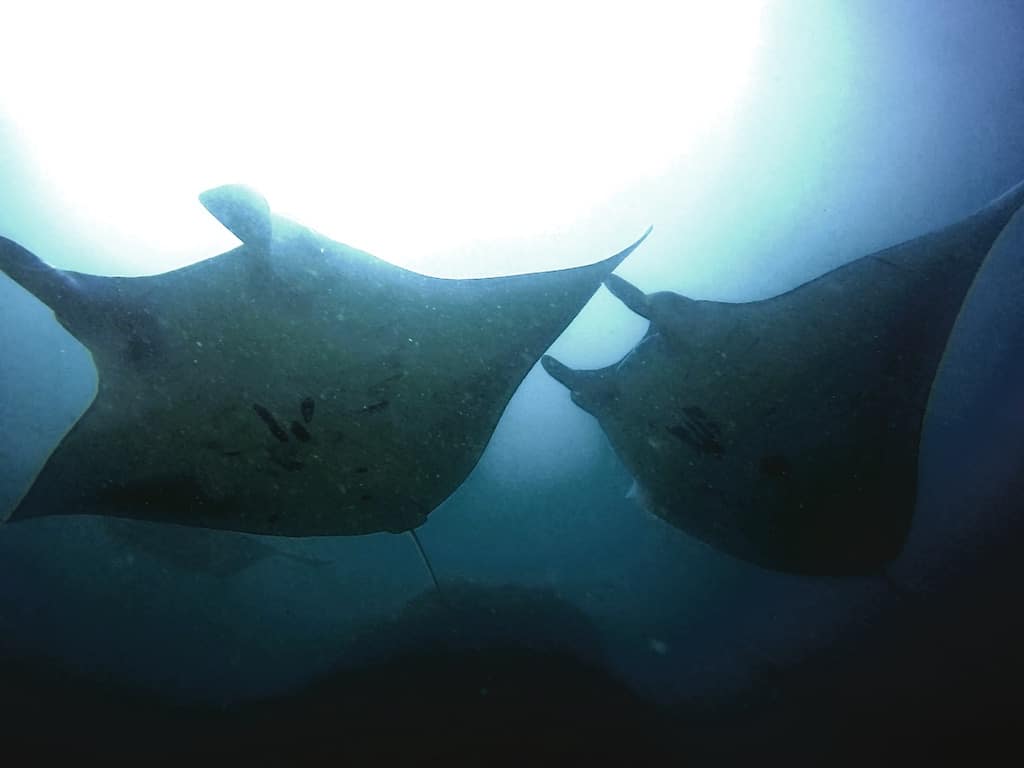
Some snorkeling tours stop at Manta Bay to shorten the trip and save fuel. However, the chances of seeing mantas here are lower, around 80%. In addition, many snorkeling boats chase the rays, which disturbs the experience. Furthermore, unlike Manta Point, the underwater scenery and marine life at Manta Bay are not very remarkable.
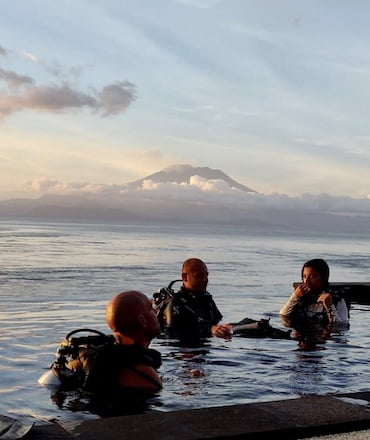
Dune Penida dive resort
The Adiwana Warnakali hotel is home to the Dune Penida PADI 5-star dive center, situated in an exceptional location, perched above Toyapakeh Harbor on Nusa Penida Island.
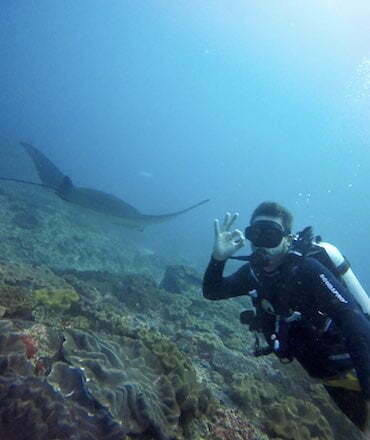
Best dive sites in Bali
20 best dive sites in Bali around Nusa Penida, in Padang Bay and North Bali : read everything about manta rays, oceanic sunfish, sharks & more.
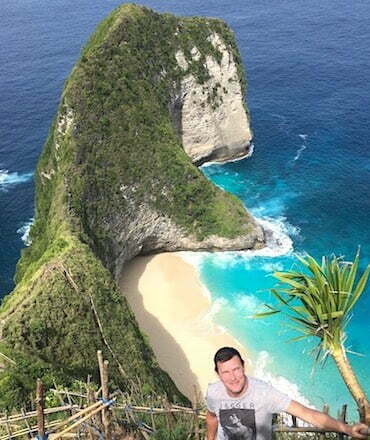
Top 15 to see in Nusa Penida
After 30 visits to Nusa Penida, I updated my list of 15 awesome sites to see in Nusa Penida island : beaches, temples, cliffs, dive sites, and many more !
